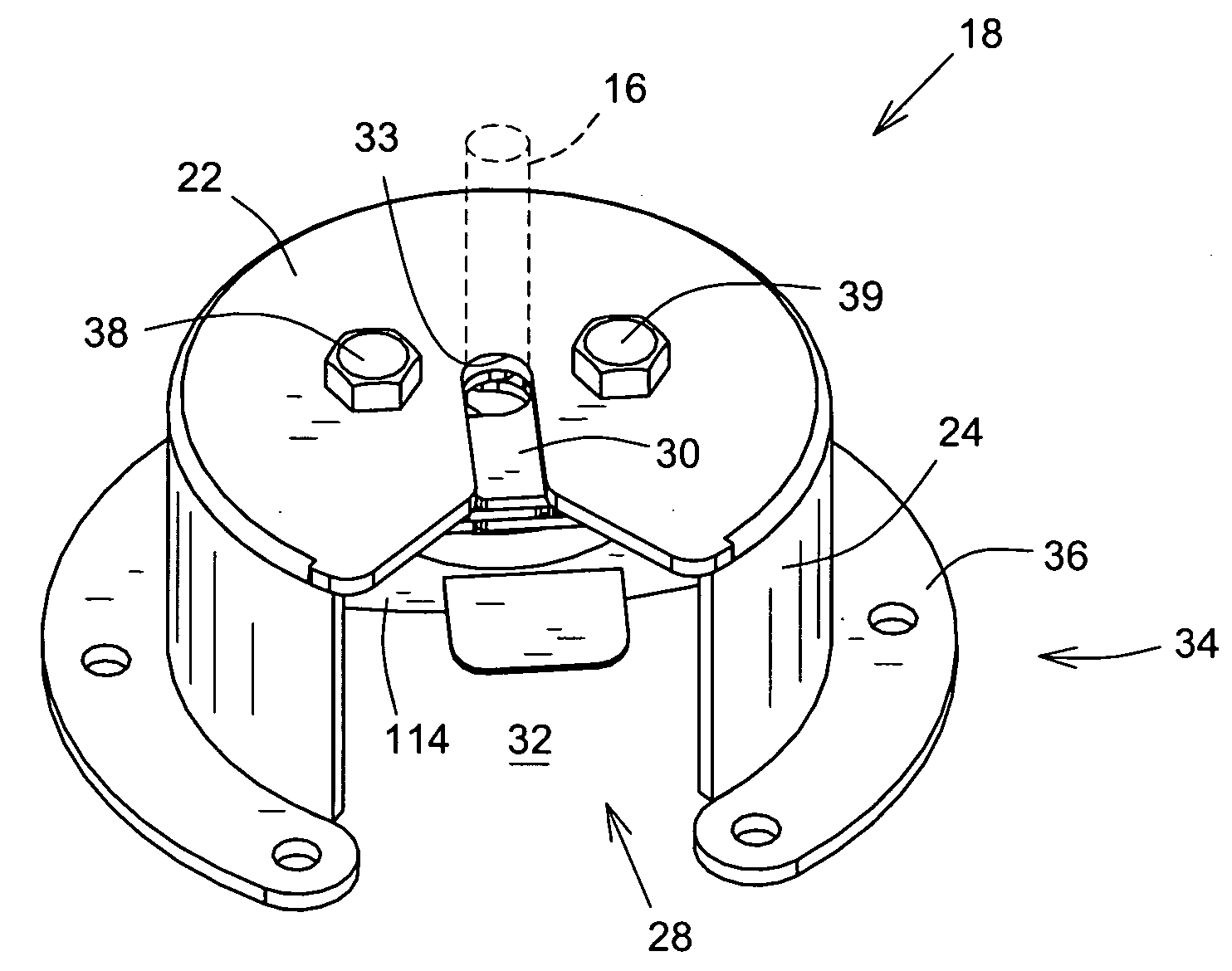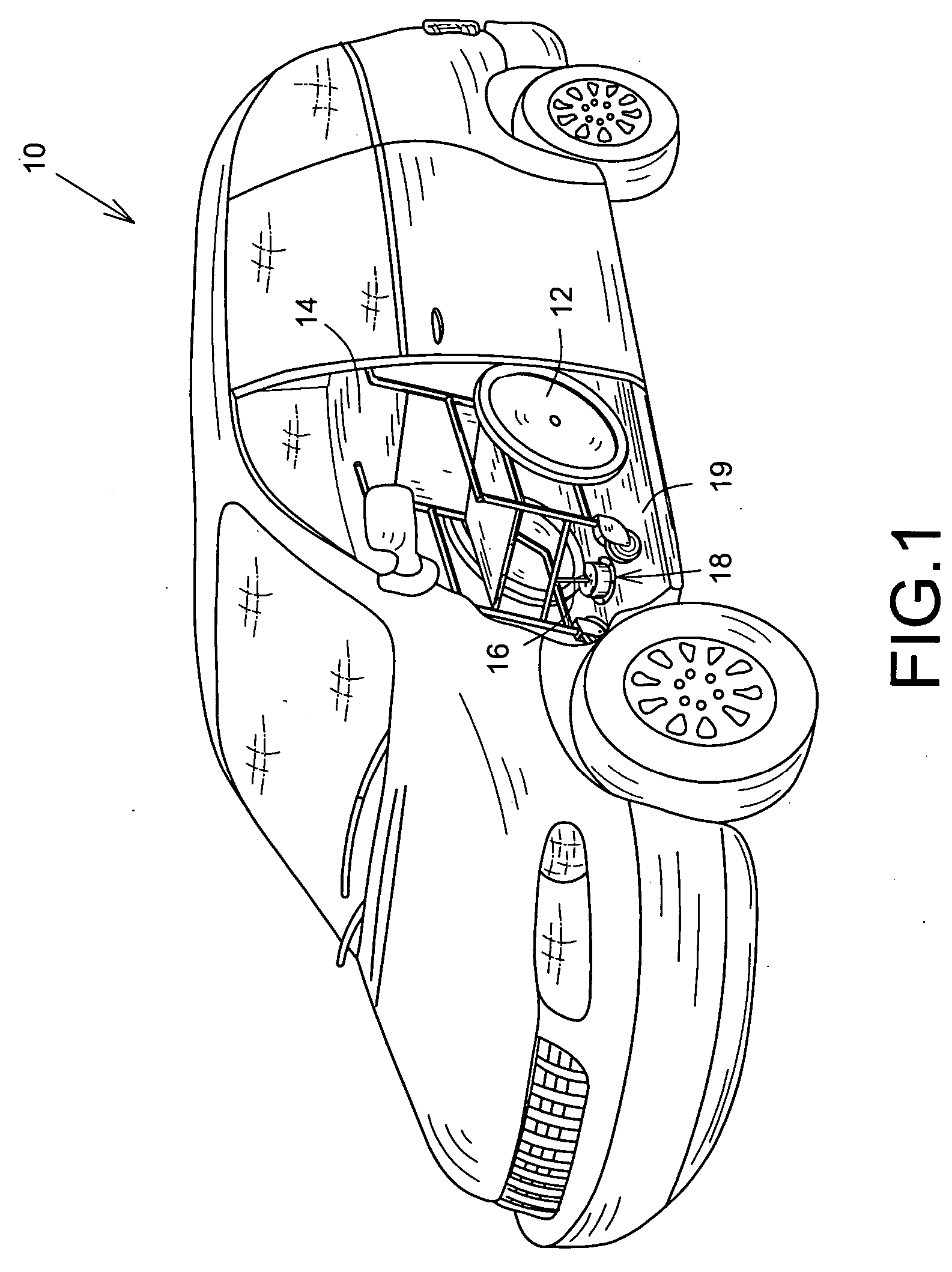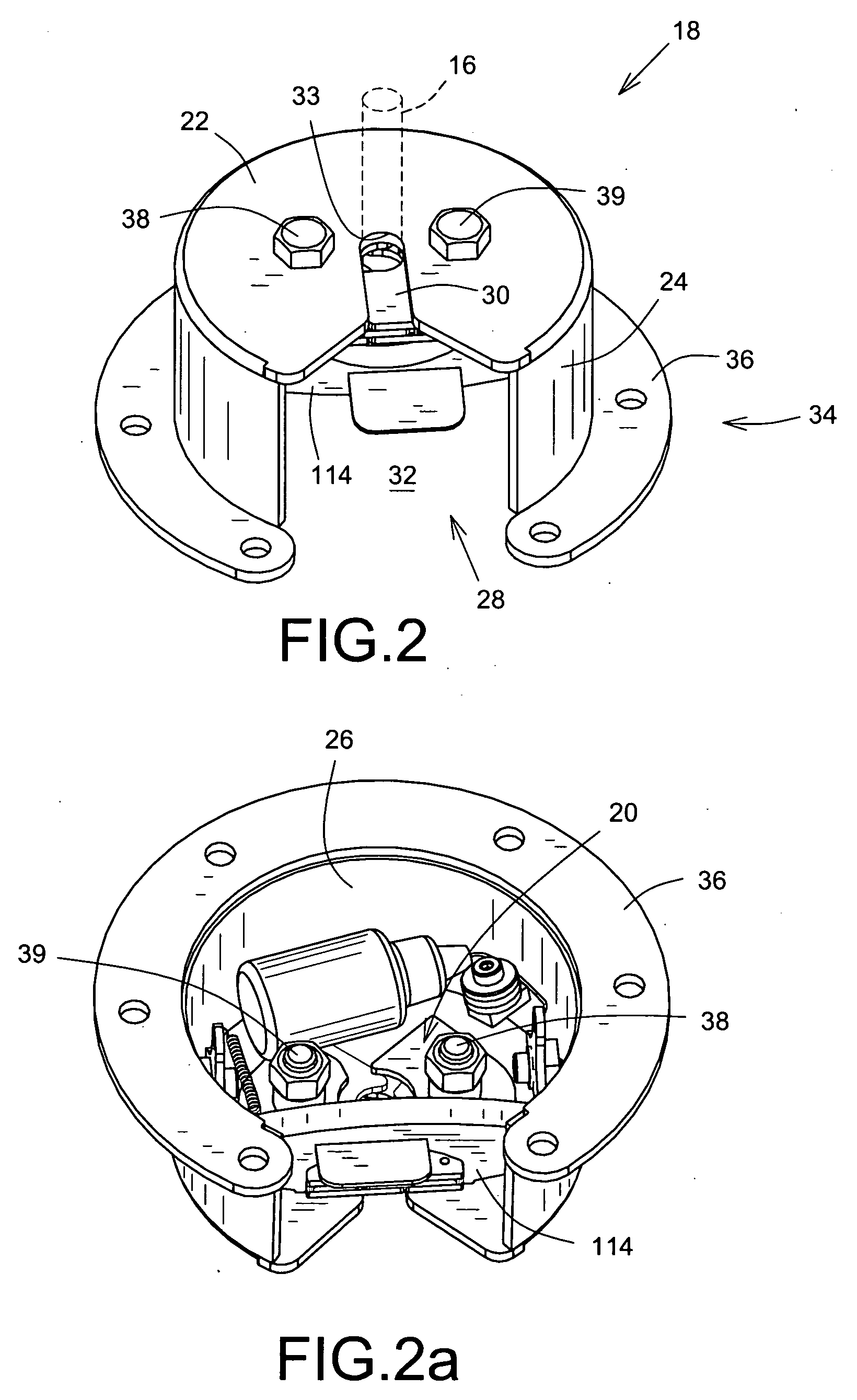Wheelchair locking device
- Summary
- Abstract
- Description
- Claims
- Application Information
AI Technical Summary
Benefits of technology
Problems solved by technology
Method used
Image
Examples
Embodiment Construction
[0023] Referring to FIGS. 1 to 3, a vehicle, such as a minivan and the like, is shown generally at 10. The vehicle 10 is typically adapted to permit access of a wheelchair 12 into an interior 14 of the vehicle 10. The wheelchair 12 includes a downwardly depending locking pin 16 connected to the wheelchair frame and is typically an elongate shaft with a nut connected to an end furthest away from the wheelchair frame. A housing apparatus 18 is connected to a floor 19 of the vehicle 10 and houses a locking device 20 for mounting and retaining the wheelchair 12 in the vehicle 10. The housing 18 is located in the interior 14 of the vehicle 10 and includes a top wall 22 and a sidewall 24. The top wall 22 and the sidewall 24 define an inner chamber 26 for mounting the locking device 20 therein. The sidewall 24 and the top wall 22 are shaped to permit the wheelchair 12 unrestricted rotation thereabout at a time when the locking pin 16 is engaging the locking device 20, such as when a user f...
PUM
 Login to View More
Login to View More Abstract
Description
Claims
Application Information
 Login to View More
Login to View More - R&D
- Intellectual Property
- Life Sciences
- Materials
- Tech Scout
- Unparalleled Data Quality
- Higher Quality Content
- 60% Fewer Hallucinations
Browse by: Latest US Patents, China's latest patents, Technical Efficacy Thesaurus, Application Domain, Technology Topic, Popular Technical Reports.
© 2025 PatSnap. All rights reserved.Legal|Privacy policy|Modern Slavery Act Transparency Statement|Sitemap|About US| Contact US: help@patsnap.com



